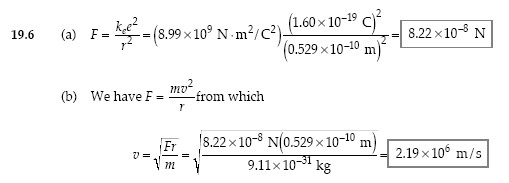Questions
Q19.3 No. The balloon induces polarization of the molecules in the wall, so that a layer of positive charge
exists near the balloon. This is just like the situation in Figure 19.6a, except that the signs of the charges
are reversed. The attraction between these charges and the negative charges on the balloon is stronger
than the repulsion between the negative charges on the balloon and the negative charges in the
polarized molecules (because they are farther from the balloon), so that there is a net attractive force
toward the wall. Ionization processes in the air surrounding the balloon provide ions to which excess
electrons in the balloon can transfer, reducing the charge on the balloon and eventually causing the
attractive force to be insufficient to support the weight of the balloon.
Q19.6 No. Life would be no different if electrons were + charged and protons were – charged. Opposite
charges would still attract, and like charges would repel.
The naming of + and – charge is merely a convention.
Q19.7 Similarities: A force of gravity is proportional to the product of the intrinsic properties (masses) of two
particles, and inversely proportional to the square of the separation distance. An electrical force
exhibits the same proportionalities, with charge as the intrinsic property.
Differences: The electrical force can either attract or repel, while the gravitational force can only attract.
The electrical force between elementary particles is vastly stronger than the gravitational force.
Q19.11 Four times as many electric field lines start at the surface of the larger charge as end at the smaller
charge. The extra lines extend away from the pair of charges. They may never end, or they may
terminate on more distant negative charges. (Figure 19.20 shows the situation for charges +2q and –q).

Q19.22 The electric fields outside are identical. The electric fields inside are very different. We have E = 0
everywhere inside the conducting sphere while E decreases gradually as you go below the surface of
the sphere with uniform volume charge density.
Problems










